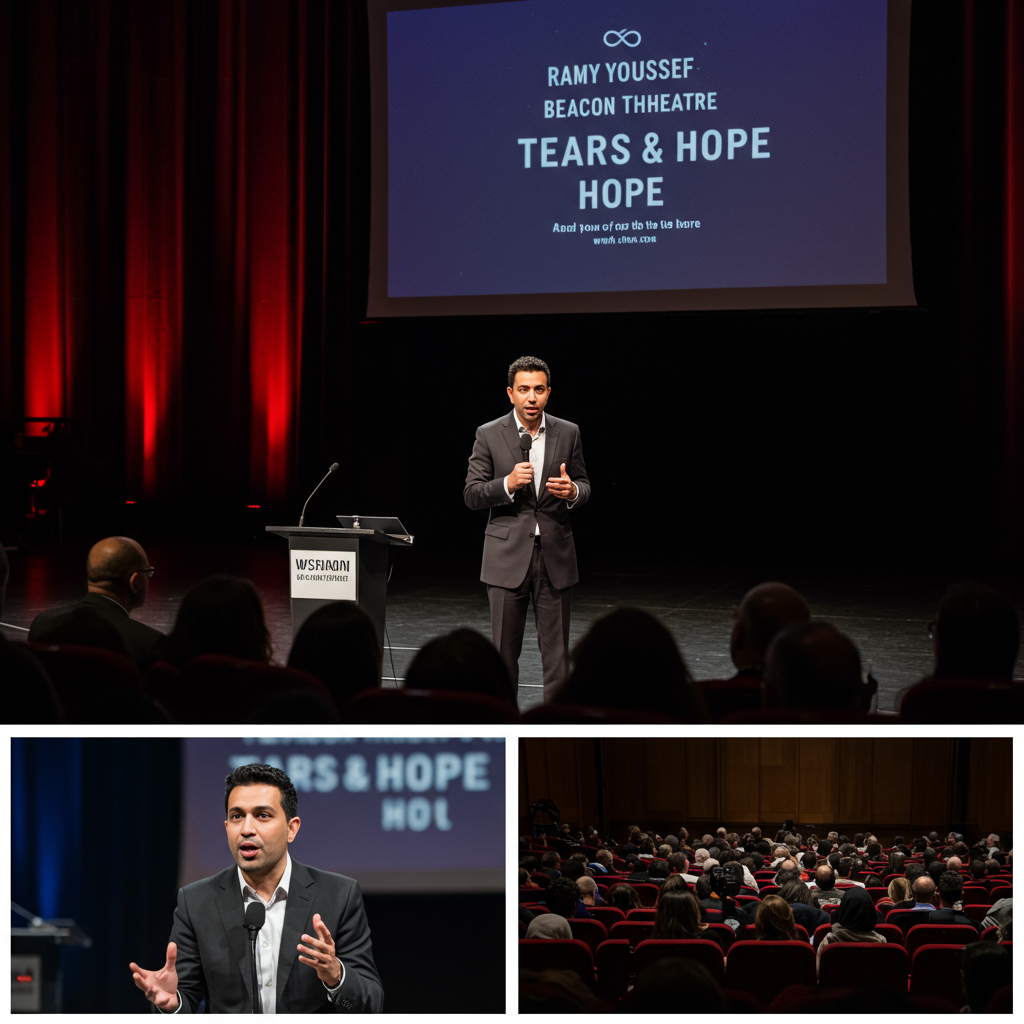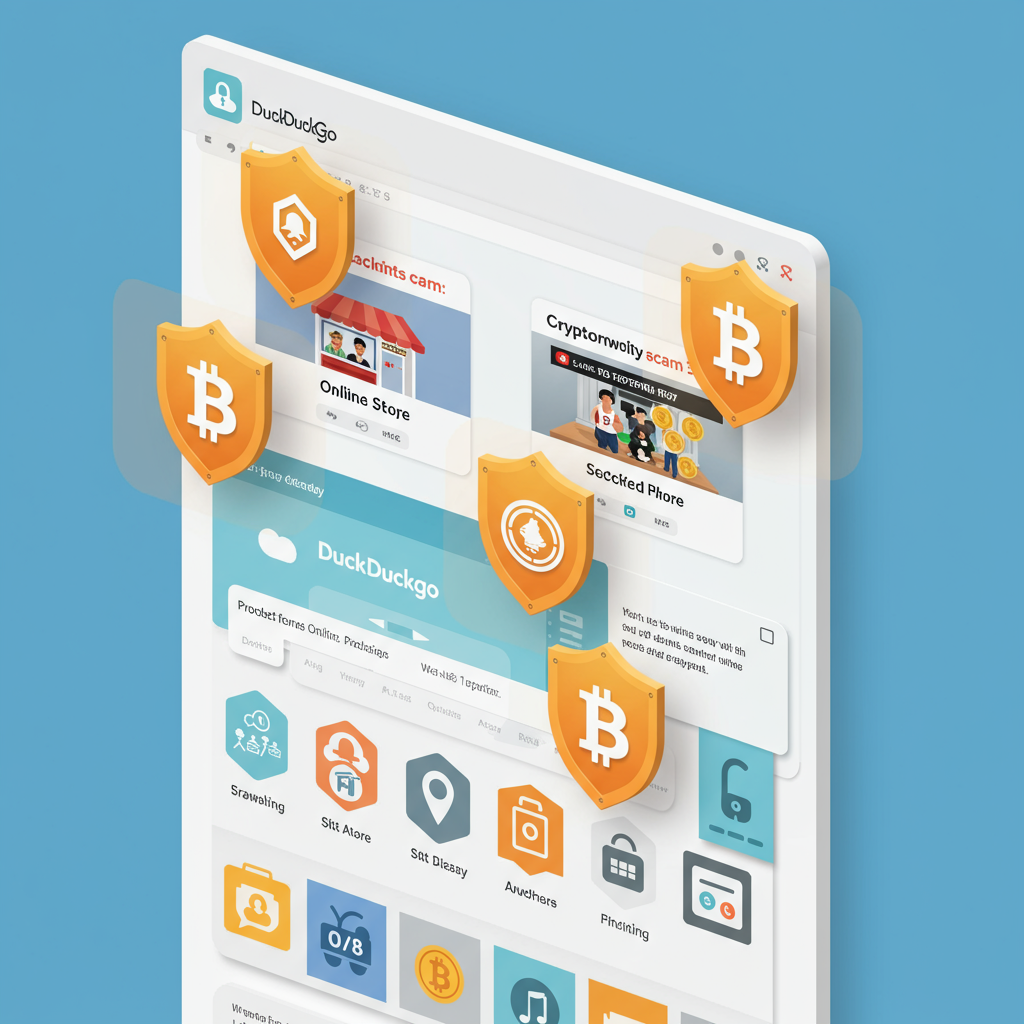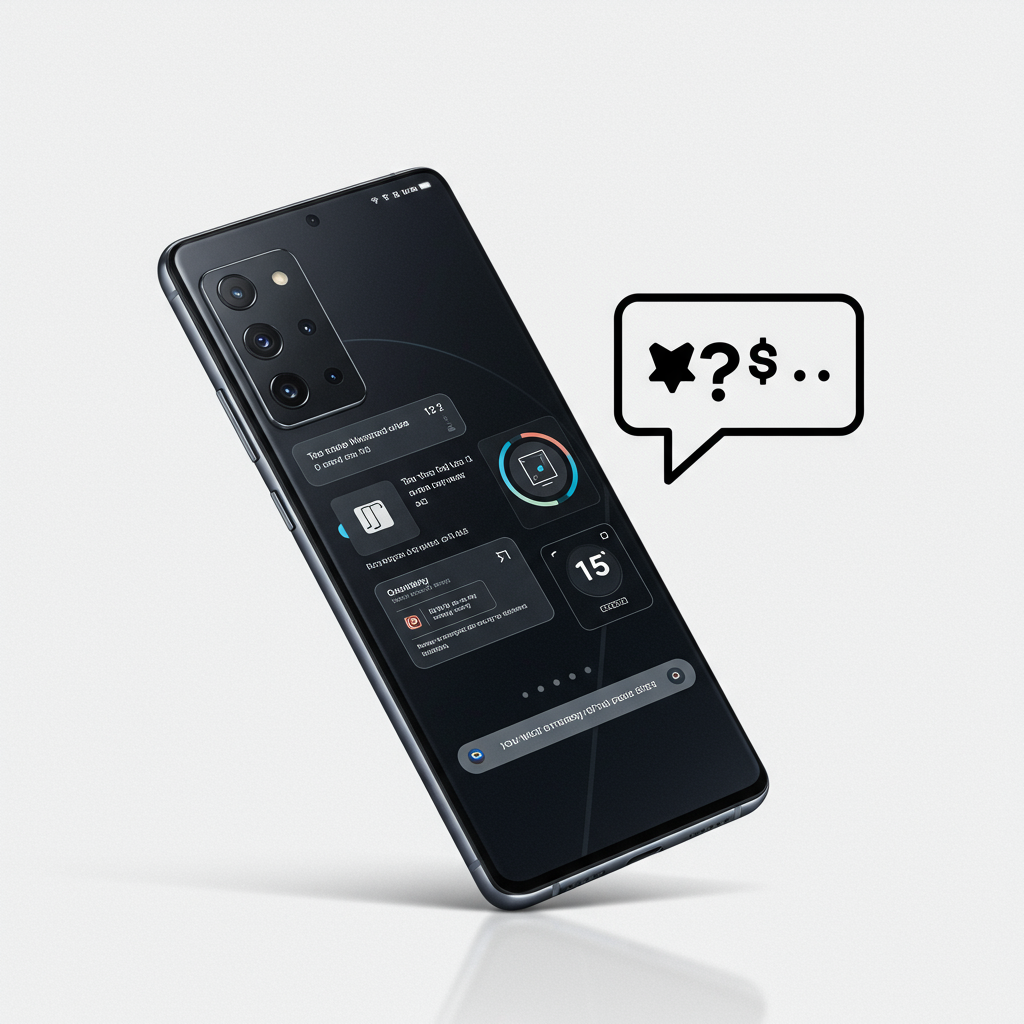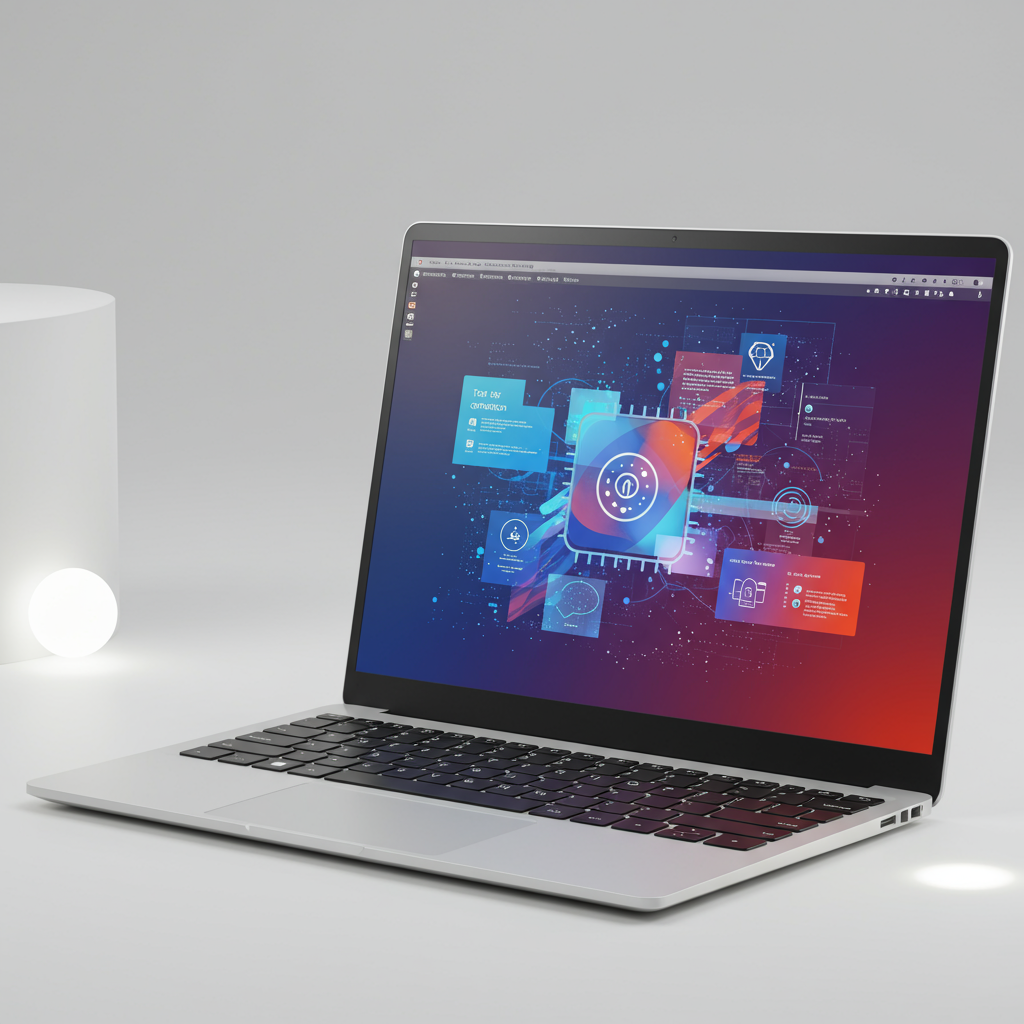A wave of palpable anticipation swept through New York City’s historic Beacon Theatre long before comedian Ramy youssef even stepped onto the stage for his performance on June 28th. The air thrummed with an energy that suggested something significant was about to unfold, beyond a standard comedy set. Attendees noticed various prominent figures scattered through the vast auditorium, including fellow actors and media personalities, hinting at the special nature of the evening. The whispers circulating hinted at the potential presence of unexpected guests, specifically referencing a recent, surprising political development that had captured the city’s attention.
The Atmosphere Before the Show: Anticipation Builds at Beacon
Before the spotlight hit Ramy Youssef, the nearly 3,000-seat Beacon Theatre buzzed with a unique excitement. It wasn’t just the usual crowd gathering for a highly anticipated comedy show. There was an undercurrent of political and social awareness woven into the atmosphere. Recognizing faces from different spheres—entertainment, activism, and politics—in the audience amplified this feeling. The diverse mix of attendees underscored the broad appeal and cultural relevance of Youssef’s work and the topics he often addresses.
Notable Figures in the Crowd
Several well-known individuals were spotted navigating the theatre’s aisles and greeting acquaintances. This added to the sense of a special event unfolding. The presence of figures from different fields highlighted the intersection of comedy, culture, and current events that Ramy Youssef’s performance often explores. The buzz wasn’t just about the comedian; it was about the community he draws and the conversations he sparks.
Ramy Youssef’s Set: Setting the Stage for Surprise
Ramy Youssef’s stand-up set masterfully navigated his signature blend of personal anecdotes, cultural observations, and thoughtful commentary on faith, identity, and the complexities of the modern world. His jokes often touch upon sensitive topics, finding humor in the nuanced realities of being Muslim and Arab in America. Throughout the set, subtle references and the overall tone seemed to build towards something more. The audience reacted with a mix of laughter and knowing appreciation, sensing a connection between the comedic material and the broader social context they inhabited.
The First Surprise: Welcoming Zohran mamdani
As Ramy Youssef neared the end of his set, he spoke about recent events that had instilled a sense of optimism in him. He mentioned two specific moments from the past week that left him feeling hopeful. This setup immediately piqued the audience’s interest. True to the earlier rumors, he then introduced the first of his surprise guests: Zohran Mamdani. Mamdani had recently achieved a remarkable victory in a New York City Democratic primary, defying expectations and energizing progressive voters.
Mamdani’s Message and Youssef’s Advice
Upon appearing, Zohran Mamdani was greeted with an immediate standing ovation from the Beacon Theatre crowd. The reaction was electric, typically reserved for main performers or political figures on a much grander stage. Mamdani took the opportunity to briefly touch upon his campaign’s central themes, emphasizing the critical need for affordability in New York City. Ramy Youssef, with comedic timing, offered Mamdani lighthearted but pointed advice: beware of invitations to islands, a humorous nod to potential political pitfalls or compromises. Mamdani accepted the advice with a symbolic gesture of commitment.
An Even Deeper Moment: Mahmoud khalil Takes the Stage
Following Mamdani’s appearance, Ramy Youssef became noticeably emotional. His voice caught, showing genuine reverence as he prepared to introduce his second guest. This introduction led to an even more profound moment. He welcomed Mahmoud Khalil to the stage. Khalil, a Columbia University alumnus, had recently been released after being detained by ICE in Louisiana for exercising his right to free speech regarding the conflict in Gaza.
Khalil’s Story and the Power of Free Speech
Mahmoud Khalil’s appearance elicited an overwhelming response from the audience. The standing ovation for Khalil was reportedly even longer and more fervent than the one for Mamdani. Khalil had been detained from March 8th until June 20th, highlighting the serious implications faced by individuals speaking out on controversial issues. His release, just days before this event, made his presence incredibly poignant. Despite his recent ordeal, Khalil displayed a surprising lightness and warmth, his smile beaming as he addressed the crowd. He spoke about the importance of joy as an act of resistance, particularly against systems seeking to suppress dissent or hope.
A Shared Platform of Hope and Resistance
With Zohran Mamdani standing beside him, Mahmoud Khalil spoke about the hope he felt following Mamdani’s electoral success. He expressed his desire for his newborn son to grow up in a city where leaders like Mamdani could hold office. Mamdani, in turn, offered a powerful response, stating his hope that Khalil’s son would grow up in a city where he felt free to speak his mind without fear. This exchange captured the heart of the evening’s unexpected impact. It symbolized a shared commitment to fighting for a more just and equitable society, one where both political representation and freedom of expression are safeguarded.
The Audience Reaction: Overwhelming Emotion
The emotional weight of Khalil’s story and the symbolism of the three men together deeply affected the audience. Many were visibly moved, with some wiping away tears. The collective gasp and subsequent roars of support throughout the evening underscored how deeply these issues and individuals resonated with those present. It wasn’t just a performance; it felt like a communal acknowledgment of struggle, resilience, and the potential for positive change. The moment highlighted the power of individuals coming together, even in unexpected settings like a comedy show, to affirm their values and support those fighting for them.
Why This Moment Mattered: Art, Politics, and Community
The surprise appearance of Zohran Mamdani and Mahmoud Khalil during Ramy Youssef’s set transcended a simple cameo. It represented a powerful convergence of art, politics, and social activism. Ramy Youssef used his platform to amplify voices that embody resilience and hope in the face of systemic challenges. Mamdani’s presence celebrated a grassroots political victory seen as a pushback against the status quo. Khalil’s appearance highlighted the fight for fundamental rights like free speech and shed light on issues of detention and activism.
The Symbolism of Three “Brothers”
Ramy Youssef referred to Mamdani and Khalil as his “brothers,” emphasizing a bond forged through shared identity, values, or experiences. This term resonated deeply, suggesting a sense of community and mutual support among men navigating complex public lives. The image of the three men embracing on stage, calling for a picture despite the audience’s phones being locked away, became a potent symbol. It represented solidarity, shared struggle, and a moment of collective triumph and hope witnessed by thousands.
The event demonstrated how cultural spaces like comedy shows can become unexpected venues for political expression and community solidarity. It underscored the deep connection between artists, activists, and their audiences, particularly when addressing resonant issues. The raw emotion displayed, both on stage and in the audience, spoke to the profound impact of the narratives shared and the individuals embodying them.
Frequently Asked Questions
What was the emotional significance of Ramy Youssef bringing Zohran Mamdani and Mahmoud Khalil on stage?
Bringing Zohran Mamdani and Mahmoud Khalil on stage created a deeply emotional moment at Ramy Youssef’s show. It symbolized hope and resistance. Mamdani represented a recent progressive political victory in New York City. Khalil, recently released after ICE detention for free speech activity, embodied resilience in the face of adversity. Youssef himself became visibly teary, reflecting the gravity and moving nature of the shared platform. The audience’s reaction, with standing ovations and visible emotion, highlighted the significant impact these figures and their stories had.
What were Zohran Mamdani and Mahmoud Khalil known for before appearing with Ramy Youssef?
Before their surprise appearance with Ramy Youssef at the Beacon Theatre, Zohran Mamdani was known as a progressive political candidate who had just secured a notable victory in a New York City Democratic primary election, generating considerable buzz. Mahmoud Khalil was known as a Columbia University alumnus and activist who had been recently detained by ICE in Louisiana from March to June for speaking out on issues related to Gaza. His case had drawn attention among activists and those concerned with free speech rights.
What message did Zohran Mamdani and Mahmoud Khalil share during their appearance at the Beacon Theatre?
Zohran Mamdani spoke briefly about his campaign’s focus on making New York City more affordable. Mahmoud Khalil shared reflections on his recent detention experience and emphasized the importance of joy as an act of resistance. Both men expressed hope for the future, particularly for Khalil’s newborn son, wishing for him to grow up in a city with leaders like Mamdani and where he is free to speak his mind. Their messages collectively highlighted themes of political hope, resilience, free speech, and community solidarity.
The moment the lights came up and the crowd dispersed onto the humid streets of the Upper West Side, the energy lingered. As audience members retrieved their phones, eager to share the news of the unexpected appearances, the murmurs continued. It was clear that Ramy Youssef’s June 28th show was more than just a comedy performance. It was a significant cultural event, a powerful display of solidarity, and a reminder of the deep connections between art, activism, and the ongoing fight for justice and hope in the city and beyond.




